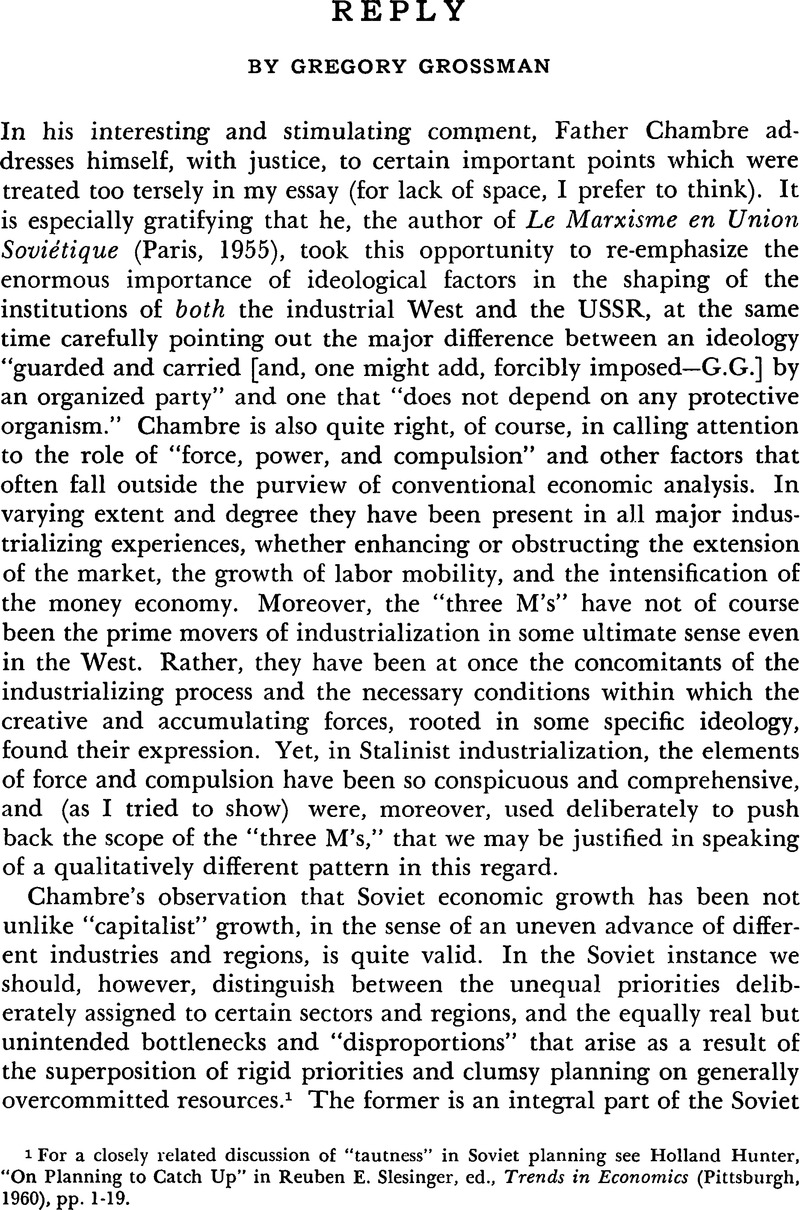No CrossRef data available.

1 For a closely related discussion of “tautness” in Soviet planning see Holland Hunter, “On Planning to Catch Up” in Slesinger, Reuben E., ed., Trends in Economics (Pittsburgh, 1960), pp. 1–19 Google Scholar.
2 Incidentally, there seems to be some terminological difference between us. For instance, I would hesitate to say (as does Granick in par. 3) that in the Soviet case “a market economy is allowed to function” because the “predetermined volume and mix of consumers' goods” is sold unrationed (and therefore presumably at more or less equilibrium prices). Following established usage, I should rather characterize this as a situation of free consumers’ choice but not one in which the market mechanism operates decisively. I would also rather not associate myself with the phrase “exploitation of households” (par. 5, and cf. par. 7), the strictly economic meaning of which is not clear to me.
3 Indeed, I did not yet have Bergson's valuable study of the Soviet real national income at my disposal when I was writing the article.